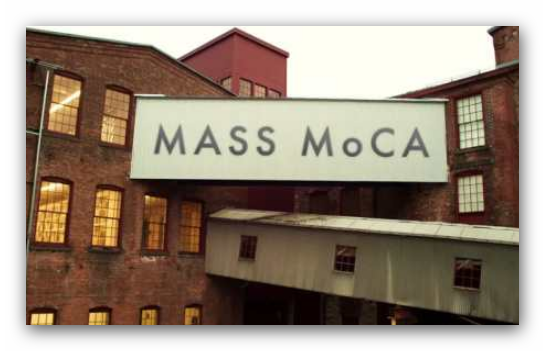Aug 3 2019 -
Massachusetts Museum of Contemporary Art
North Adams, MA
The U.S.-Mexico border has been the subject of increased attention and heated debate since Donald Trump declared the building of a permanent wall along the 2,000-mile boundary between the two countries as one of his top priorities as president. Artist ERRE, who lives and works between Tijuana and San Diego, has made the border a central part of his work for over two decades, examining its oft-forgotten history and shifting contours (California, Texas, Utah, Nevada, Arizona, New Mexico, and parts of Wyoming, Colorado, Kansas, and Oklahoma used to be part of Mexico), as well as its current social, economic, and political implications. The primary checkpoint between Tijuana and San Diego, the San Ysidro Port of Entry, is the most heavily trafficked land border in the world, where over 30 million people pass each year. The endless flow of goods and people is evidence of the intricate and interdependent relationship of the two cities and of the United States and Mexico more broadly.
For those of us who live far from its realities, ERRE brings to MASS MoCA a palpable image of the border wall with the installation of Of Fence (2017), a sculptural recreation of the weathered metal barricade that the artist knows well. This formidable architectural obstruction is – and has been for a long time – a powerful physical and psychological fact in Tijuana, where houses, restaurants, and beaches butt up against the imposing barrier. At MASS MoCA, the rusty-red metal fence will reach up to the ceiling and stretch across 120 feet of the museum, marking the entry to a gallery where a selection of new and existing works by the artist will be on view. ERRE pairs this sculptural wall with a wall of text featuring a stanza from Langston Hughes’ 1936 poem “Let America Be America Again.”
“O, let my land be a land where Liberty
Is crowned with no false patriotic wreath,
But opportunity is real, and life is free,
Equality is in the air we breathe.”
The poem by the influential Harlem Renaissance writer frames the American dream as one that is deferred for most, yet imagines a future when “equality is the air we breathe.” These words bring to mind those of the oft-quoted sonnet immortalized on a plaque at the Statue of Liberty, which entreats “Give me your tired, your poor, Your huddled masses yearning to breathe free.” At the same time, the title of Hughes’ poem is eerily reminiscent of Trump’s campaign slogan, “Make America Great Again,” which is related to tougher policies regarding trade and emigration for our neighbors to the south. The entryway leading into ERRE’s main exhibition space will be lined with bar-like vertical strips of vinyl text, a work titled Umbral / Threshold (2017) which spells out the questions that ICE asks travelers crossing the border.
Language and word play are central to ERRE’s sculptural and conceptual practice, evident in Of Fence, which spells out a variation of the word “offense.” The double meaning is clear, with the wall acting as a deterrent to the offense (a word associated with criminal activity) of crossing the border illegally, while the crude barricade itself can be seen as an offense to the landscape and the families and communities it separates.
ERRE’s work often emphasizes the bonds between the two countries he calls his own. Perhaps his best known work, created in 1997 for InSite, an international art festival that takes place in both Tijuana and San Diego, is a 33-foot-tall wooden horse with two heads. Referencing the Trojan horse of Greek mythology, the monumental, hollow structure on wheels was placed at the marker that defines the geographical border line. With its two heads sharing a single body, but facing in opposite directions, the horse symbolizes the need to live in concert with each other. Yet, by invoking the subterfuge of the Greeks who entered Troy, the towering structure also makes references to invasion. One might think of the Mexican-American War of 1846-48 which resulted in the U.S. annexing half of Mexico’s territory as well as what many Americans see as an ongoing invasion of undocumented immigrants into the U.S. who have been smuggled inside the trailer beds of commercial trucks, like the Greek soldiers hidden inside the legendary horse.
Titled Toy-an Horse, the work makes yet another play on words while referencing childhood, both the artist’s own (when he first learned the story of the Trojan Horse) and that of his children who were three and five when the artist created the work. Looking like a toy enlarged to giant proportions, the work seems to frame the border as part of a childish game, while simultaneously suggesting that we must teach our children history or it is doomed to repeat itself. Given the recent separations of children from their parents at the border, the toy-like appearance of the structure takes on added meaning. At MASS MoCA, ERRE will display the 8 x 10 foot colossal heads of Toy-an Horse, which have been removed from their shared body and charred, as if the remains of some conflagration. Arranging them on the floor in a position that mimics the yin-yang symbol, the artist continues to emphasize the symbiotic relationship between the U.S. and Mexico despite the recent damage to our ties.
With a selection of new and existing work that emphasizes how language, movement, and architecture shape our experience and our identities, ERRE brings to MASS MoCA new perspectives on the border and the U.S. and Mexico individually. While the artist is a well-known figure on the West Coast, this presentation marks his first solo exhibition on the East Coast.
Credit: Exhibition overview from museum website.
Exhibition Venues & Dates
Aug 3 2019 -
Massachusetts Museum of Contemporary Art
North Adams, MA
